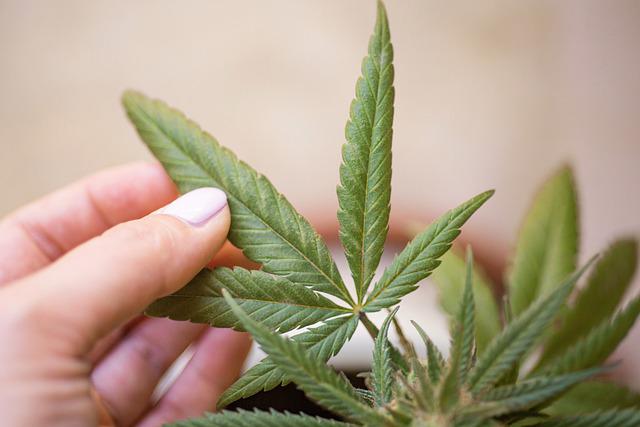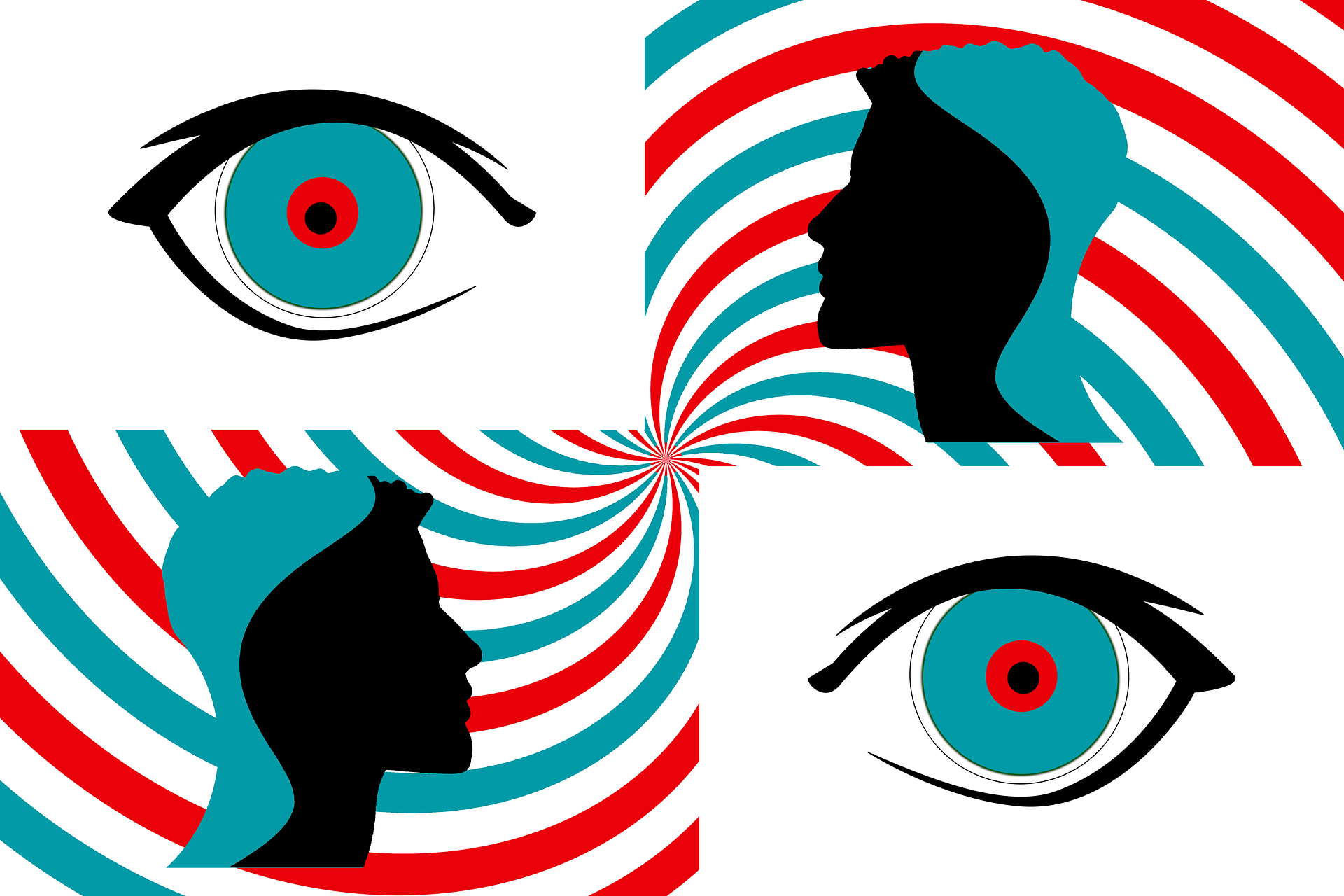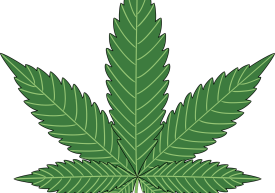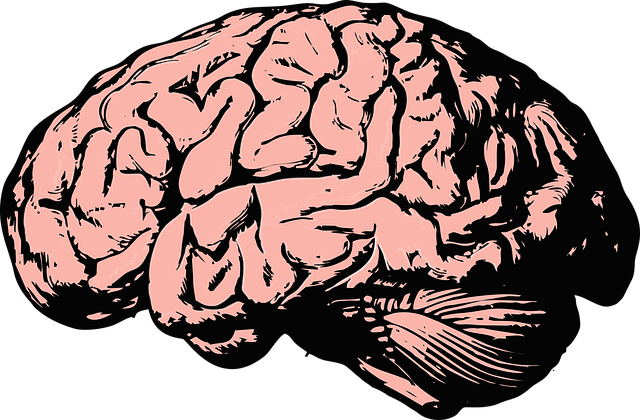My review of Aurora Cannabis MK ULTRA 4.5 stars out of 5!
Multiple Sclerosis is a complex disease; those living with it need a simple approach. A treatment approach should appreciate the physiology of the disease process without neglecting the human body as a holistic system, and the patient as a person.
Naturopathy is an ideal philosophy of medicine for the treatment of M.S. as it aims to address disease processes and symptoms without loosing sight of the patient as an individual.
I chose to focus in neurological disease early into my professional career and as a result I have come across many complex chronic diseases of the nervous system including all subtypes of M.S. When patients come for their initial visit it is not uncommon to be privy to a long list of life events that have impacted the disease, symptoms that have evolved over years and medications that have been tried, stopped and tried again.
It’s easy to see why the practitioner on the other end of the patient with M.S. can become overwhelmed and confused, loosing sight of the big picture, dismissing the patients needs and goals. Unfortunately, this medical tunnel vision re-aimed at addressing each and every concern translates into complex and confusing treatment plans that most patients cannot comply with. I sympathize with these patients who have to remember to take dozens of pills while also dealing with a life altering condition.
To make matters worse, these confusing treatment plans hardly ever work because they tend to forget that the human body is not a series of islands, rather it’s a society striving to work in harmony and balance. The key to developing a simple, understandable and effective treatment plan is to figure out what is out of balance and how do we bring it back.
A typical treatment plan for M.S. has three parts: Foundations, The Immune System and Specific Symptoms. Since we are working toward bringing the body back into balance it is important to take the time to hear the full story and timeline of how the condition started and progressed. Often during the initial consultation it will become clear as to what type of events precluded the first attack and how these events triggered a physiological imbalance.
Foundations
It’s a futile effort to try and treat symptoms while the very basics of health and wellness are not fortified. The foundations of health can be summed up into three parts: Sleep, Diet and Exercise.
Sleep is the healing chamber for the body. Recently studies have shown that the brain undergoes a type of detoxification process while we sleep. Many neurodegenerative diseases have been correlated to poor sleeping habits. It is common to see sleeping issues in patients with M.S. In fact I have had a few cases where years of terrible sleep may have contributed to the patient experiencing their first symptoms related to M.S. This makes sense in the light of the new research demonstrating how important sleep is in clearing neurotoxic compounds from the brain.
One of the most important protocols I put together for my M.S. patients is aimed at improving sleep. This is achieved through sleep hygiene education and supplements that have been carefully vetted over my years in practices for their effectiveness in improving sleep initiation and maintenance.
Diet is important for a number of reasons, some are general and some are specific to M.S. The food we eat and its relation to our digestive tract determines our nutritional robustness.
M.S. is a chronic neuro-inflammatory state and therefore patients with M.S. will be using up vitamins and minerals involved in inflammatory processes at a greater rate than in a healthy control group. Therefor it’s important to determine what the nutritional status is of the M.S. patient (through consultation and specific lab tests), bring it back into balance and correct deficiencies. Otherwise the body will be unable to cope with the inflammatory process and the disease will progress.
It is also important to identify any food allergens, intolerances and sensitivities in the M.S. patient for these will perpetuate the inflammation. Chronic inflammation has a detrimental effect on the immune system, which I will discuss further in the next part of the treatment plan.
Another aspect related to diet is the health of the gastrointestinal tract and more specifically the micro-biome (the bacteria of the gut). A healthy micro-biome is important for detoxification, nutrient absorption and immune system regulation. A protocol addressing diet will focus on testing for nutritional deficiencies, food sensitivities, specific dietary guidelines for M.S. and supportive supplements where necessary.
A good dietary resource specific to M.S. is The Wahls Protocol.
 Exercise is a powerful health modulator and is under-appreciated for its importance in chronic disease and specifically M.S. Often exercise comes in the form of physiotherapy in progressive M.S. and the first thing I will do with a patient is set them up with one of the physiotherapists in my clinic (if they don’t already have a physiotherapy program). Often patients newly diagnosed with M.S. are neglected by the medical system in terms of exercise. In-patient rehab programs are inadequate, scooters and wheelchairs are promoted over therapy. Exercise and physiotherapy are instrumental in promoting neuroplasticity, decreasing inflammation, improving energy metabolism, maintaining and improving upon range of motion.
Exercise is a powerful health modulator and is under-appreciated for its importance in chronic disease and specifically M.S. Often exercise comes in the form of physiotherapy in progressive M.S. and the first thing I will do with a patient is set them up with one of the physiotherapists in my clinic (if they don’t already have a physiotherapy program). Often patients newly diagnosed with M.S. are neglected by the medical system in terms of exercise. In-patient rehab programs are inadequate, scooters and wheelchairs are promoted over therapy. Exercise and physiotherapy are instrumental in promoting neuroplasticity, decreasing inflammation, improving energy metabolism, maintaining and improving upon range of motion.
My clinic specializes in neurological rehabilitation using the Bobath Physiotherapy approach. Physio-Logic
The Immune System
Multiple Sclerosis is an autoimmune condition and therefore one cannot overlook the role of the immune system. Autoimmunity basically translates to a confused immune system that has targeted healthy cells and tissues rather than disease. The philosophy behind this part of the treatment plan addresses two questions: how the immune system became confused and how to bring it back into harmony.
There are many theories as to the cause of M.S., to name a few: Genetics, Vitamin D deficiency, Environmental Toxin Exposure, Candida Overgrowth, Dairy Protein Antigen Confusion and Leaky Gut Syndrome. There are truths to be told within many of these theories but in reality we just don’t know exactly what causes M.S. Some things we do know are the triggers for symptom activation, and things that reduce the risk of developing M.S. We know that stress (physical and/or emotional) often precipitate symptom relapse and progression. We also know that having adequate vitamin D levels are protective toward the development of M.S.
 Vitamin D is not longer thought of as merely a bone-building vitamin. In reality it is more of a hormone and has a very important role in maintaining the health of the immune system. Step one of addressing the immune system is making sure the patient has optimal levels of vitamin D and if not, to adjust those levels using specific supplemental doses of vitamin D along with calcium and regular follow-up blood work.
Vitamin D is not longer thought of as merely a bone-building vitamin. In reality it is more of a hormone and has a very important role in maintaining the health of the immune system. Step one of addressing the immune system is making sure the patient has optimal levels of vitamin D and if not, to adjust those levels using specific supplemental doses of vitamin D along with calcium and regular follow-up blood work.
Stress, whether it physical or emotional, causes a burden on the body. Most of the time we are able to cope with short durations of stress; however, when the stressful event is severe enough or lasts long enough it can impact the immune system in a negative way. Chronic stress can affect the immune system in two ways: Creating chronic inflammation that harms tissues and suppressing immune cells needed to fight infection.
When the immune system is under prolonged stress it becomes tired and makes mistakes, much like how we feel when under stress. One of these possible mistakes is mounting an autoimmune attack, harming normal healthy tissue rather than disease. Prolonged stress also depletes natural anti-inflammatory compounds like cortisol, allowing inflammation to run amuck. Therefore the protocol built around the immune system is aimed at decreasing stress on the immune system and bringing the immune system back into balance.
Anything that can be causing unnecessary inflammation needs to be dealt with and therefore chronic infections and food sensitivities must be addressed. Specific lab testing is used to investigate infections and sensitivities. Common food sensitivities in M.S. patients include: Dairy, Gluten, Yeast and Egg.
Once the major obstacles to a healthy immune system are removed we can work toward assisting the immune system back into a balanced state. The most important cells involved in bringing the immune system back into balance are “regulatory T cells” also known as “T suppressor cells”. These cells maintain tolerance in the immune system preventing autoimmunity. Part of the protocol is therefore aimed at supporting these cells. Some compounds that influence regulatory T cells are: probiotics, vitamin D, vitamin A, Omega 3 fatty acids and food sensitivities.
Specific Symptoms
Treating foundations and immune system irregularities take time, therefore it is almost equally important to address the specific symptoms of the patient. Fatigue, weakness and pain are often obstacles to important foundational concerns like sleep and exercise.
Fortunately, there are many great strategies within Naturopathic medicine to help address the most common symptoms in M.S. namely: Weakness, Spasticity, Fatigue, Pain, Bowel and Bladder issues. There are dozens of supplements that have shown promise in treating the common symptoms of M.S. The art of the practitioner is in choosing the right compounds for the right patient. As an example, medical marijuana can be very effective for spasticity, pain, bladder dysfunction and sleep but can exacerbate weakness. A good practitioner with experience in treating M.S. will know how to choose the appropriate medications for the patients needs.
Multiple Sclerosis is a complex condition with many subtypes and many different ways it affects the individual patient. Naturopathic medicine aims to treat the root cause of disease while also addressing the individual concerns of the patient. The treatment plan can be summed up into three areas: Foundations, Immune System and Specific Symptoms. This helps direct the practitioner toward the right approach and simplifies the philosophy behind the treatment, improving upon compliance and therefore patient outcomes.
[button size=”btn-large” link=”https://doctorshawn.ca/contact-us/” target=”_blank” ]Call us today![/button]
Why get a license?
I want to tell you how to obtain a license for Medical Marijuana. Every month I see a handful of patients who are trying to medicate with unregulated cannabis obtained either through “a guy” or a local illegal dispensary. The problem with this approach is that you are buying an unregulated product, meaning you cannot guarantee its purity, quality, potency, and cannabinoid profile.
There are some decent products out there but largely its hit and miss and perhaps the most frequent complaint is a lack of consistency from batch to batch. Its funny how patients will be shy about discussing use of medical marijuana with me and yet will go to a complete stranger for their medication. A growing part of my practice is convincing patients to transition from their “street weed” to a proper regulated medical marijuana product.
Although, as a Naturopathic Doctor, I am not able to directly prescribe medical marijuana in Ontario, I am fortunate to have a good professional relationship with a licensing clinic and am writing an average of 3-5 patient referrals per week. Most licensing clinics will require a referral from a healthcare professional.
How to get a license
The process is quite simple: a patient will come in either having experience with cannabis or will be curious as to whether cannabis can help them. I will then preform an assessment, including a health history and short physical exam, in order to determine if they would benefit from cannabis. A referral is then made to the licensing clinic. The licensing clinic then calls the patient to setup an appointment to get a license for access to medical marijuana. Once setup with an account the patient then does all their ordering online through a regulated distributor such as Tweed, Aphria, Tilray or MedRelief.
These regulated grower/distributors have an excellent selection of strains and oils with varying cannabinoid concentrations and terpene profiles. Most importantly, the purity and potency are guaranteed and there is very high consistency from batch to batch. Therefore, if you find a strain or oil that works for you, you can pretty much guarantee it will work the same way every time you order it.
Common conditions for referral
The most common conditions I write referrals for are: Insomnia, Multiple Sclerosis, Chronic Pain, Migraine, Irritable Bowel Syndrome, PTSD, Inflammatory Bowel Disease, Cancer, Fibromyalgia and Neurological Conditions with painful spasms.
The environment in Canada with regard to cannabis is going to change as we approach legalization, but until that happens I would advise you that it is usually better to consume regulated medicines, this medication just happens to be marijuana.
For more great articles and information on cannabis and CBD check out the link below:
How to Cook With Cannabis
Dr. Shawn demonstrates how to make edibles with medical marijuana. He’s talking CBD, THC, Terpenes, Cannabutter, Brownies and Pancakes.
Check out this “highly” informative instructional video.
Clinical Endocannabinoid Deficiency
Clinical endocannabinoid deficiency, (CED), was first introduced by Dr. Ethan Russo M.D. a neurologist, psychopharmacology researcher and former advisor to GW pharmaceuticals. The theory of CED is based on the concept that many neurological conditions are associated with neurotransmitter deficiencies, for example, a deficiency in dopamine with Parkinson’s disease. Subsequently, an endocannabinoid deficiency might be present in some disorders sharing predictable clinical features.
All humans possess an underlining endocannabinoid system governed by two primary compounds; Anandamide (AEA) and 2-Arachidonoylglycerol (2-AG). These are compounds naturally made in our body that interact with the same receptors marijuana and associated cannabinoids act upon. It is known through various studies that when endocannabinoid tone is decrease there is a lower pain threshold, disrupted digestion, mood and sleep disturbances. A deficiency of endocannabinoids can be caused by genetics, injury or disease.
Migraine
There is evidence for CED in several treatment resistant syndromes, most notably in Migraine, Fibromyalgia and Irritable Bowel Syndrome. All three present with: heightened pain sensitivity, mood disruption, and comorbidities. One study in chronic migraine sufferers discovered a statistically significant difference in endocannabinoid concentration within the cerebral spinal fluid of chronic migraine sufferers vs. non-migraine sufferers. With migraine there is a strong association between endocannabinoids and blood vessel dilation, a key component of the propagation of migraine. Furthermore activation of the CB1 cannabinoid receptor decreases pain fiber activity in the sensory nerves of the face and head.
It is worth noting that Cannabis was a mainstay treatment of migraine for a century between 1843 and 1943. A study from 2016 looked at the effects of medical marijuana on migraine headache frequency in adults. Headaches diminished from 10.4 to 4.6 attacks per month and overall 85.1% had decreased migraine frequency.
Fibromyalgia
Much like Migraine, Fibromyalgia is associated with hyperalgesia. In an uncontrolled trial of nine patients Tetrahydrocannabinol (THC) was administered in doses of 2.5-15mg a day for 3 months. Unfortunately 5 patients left the study early due to secondary THC side effects but those completing had marked reductions in subjective pain visual analog scales (VAS) 8.1 at start to 2.8 after 3 months. A survey of 1300 respondents called the National Pain Report from 2014 demonstrated that marijuana was the most effective treatment for Fibromyalgia compared to Duloxetine, Pregabalin and Milnacipran.
Irritable Bowel Syndrome
Another syndrome suspected of CED is Irritable Bowel Syndrome (IBS). The role of the endocannabinoid system in the gut is to regulate propulsion, secretion and inflammation. Cannabis was one of the first medications used for secretory diarrhea associated with cholera. A study done in 2007 demonstrated that endocannabinoids AEA and 2-AG influences the contractile force in the muscle fibers of the gastrointestinal tract. Studies also have demonstrated that there are increased levels of immunoreactive nerve fibers (TRPV1) causing pain and hypersensitivity in IBS. Cannabidiol (CBD) seems to increase AEA, which in turn reduces the activity of TRPV1. In 2007 a randomized control trial of 52 normal patients were given a single dose of 7.5mg THC. The outcome on the gastrointestinal tract was increased colonic compliance, inhibited postprandial tone, and a trend toward relaxation of fasting colonic tone.
There are a number of other conditions demonstrating evidence for CED, including motion sickness, Multiple Sclerosis, Huntington’s disease, Parkinson’s disease and Post Traumatic Stress Disorder (PTSD).
Conclusion
There is good evidence for disruption of the endocannabinoid system in Migraine, Fibromyalgia, IBS and many other neurological and psychiatric syndromes. Besides a wealth of anecdotal benefit, there exists some clinical evidence to support cannabinoids as a safe and effective treatment in these conditions. We also need to come to terms with the fact that effective medications are lacking in these conditions. An obvious shortcoming of past studies is the use of single cannabinoids for treatment such as THC. I am certain that future studies incorporating a more complete cannabinoid profile, including CBD, as a treatment approach will have far better outcomes and far fewer side effects. Lifestyle choices also play an important role in endocannabinoid function, specifically low-impact aerobic exercise. Multimodal approaches including diet, lifestyle and cannabinoid therapy will ultimately be the best approach in CED syndromes.
At my clinic I have repeatedly seen the benefits of cannabinoid therapy in these syndromes. After an initial assessment, if indicated, patients are referred to a medical cannabis clinic for registration under a licensed producer under the Access to Cannabis for Medical Purposes Regulations (ACMPR).
THC and CBD the ABC’s of Medical Marijuana
The perspective of a Naturopathic Doctor
As a practicing Naturopathic Doctor, I have understandably been occupying a front row seat in what has become one of today’s hot topic health issues; the use of medical marijuana. I have seen a trend recently in my patients; they’re dropping the conventional pain medications and experimenting with the unquestionably still taboo, cannabis. Two things seem to be driving this phenomenon: traditional pain medications aren’t doing the trick anymore and there is a curiosity about this promising although misunderstood plant.
Professionally, I too have been very curious about the medical applications of marijuana. For years patients would confide in me and share their experiences with using different preparations of cannabis. One of the usual preparations is “hemp oil”, which can contain a significant amount of a cannabinoid called CBD. Hemp oil may have been dismissed as folk remedy; however, with the recent surge in medical marijuana use prompting an educated examination of a potential effective therapy. I can now appreciate that hemp oil is a way to reap the benefits of cannabis without getting intoxicated.
There are thousands of articles on the web that explain in depth what the different components of marijuana are and how they differ in pharmacology and therapeutic applications. The point of this article is not to give a thesis but rather present a concise easy to grasp understanding of what those components do in the body and why cannabis in one form or another should be considered as a first choice medicine.
Before presenting the different types and components of marijuana, I would like to give this article some context and legitimacy by introducing myself, and my medical background. I am a Naturopathic Doctor and have been in private practice for just over 7 years in Toronto Canada. Over the past 4 years my practice has focused on the treatment of pain, debilitating neurological conditions and cancer. This really sets the stage as the first few regulated cannabis medications in Canada, namely Nabilone and Sativex, were approved for neuropathic pain, spasticity and nausea associated with cancer treatment and multiple sclerosis; both of which I see more consistently than the average naturopathic doctor. Naturally I started having patients that had experience with these medications or who were experimenting with unregulated forms of cannabis.
A watershed moment in my practice occurred when I began treating a 10-year-old girl that had suffered a stroke. I thought she would benefit from cannabis but at the same time was hesitant about subjecting her to the hallucinogenic properties of THC. Fortuitously around that very same time I viewed a CNN Sanjay Gupta report about a low THC / high CBD strain of marijuana called “charlottes web”. Treatment with this strain had been helping a young girl with a rare debilitating condition associated with frequent seizures. My young patient didn’t have seizures but had chronic high muscle tone as is also seen during seizures. The report also mentioned how CBD is not hallucinogenic. I was certainly intrigued as to the potential efficacy of this treatment and devoted both time and resources in understanding medical cannabis and CBD. As a result of this study and promising results, I now recommend CBD regularly in my practice. Now let’s take a step back and understand what CBD is and what does it do.
Although there are thousands of potentially therapeutic compounds in cannabis, research has really focused on two: THC and CBD. Depending on the sex and strain of the cannabis some will be higher or lower in one compound than the other.
THC is what gets you high. It acts on cannabinoid receptors in the body and brain with the result of inducing the perception altering experience that marijuana is known for. Along with the “high”, research has pointed out that there are definite pain lowering and mood enhancing properties of THC. However; there are some concerns with THC as it may impact learning in the developing brain, may trigger a psychotic episode in individuals predisposed to schizophrenia and impacts the users ability to carry out daily living tasks such as operating machinery and driving.
CBD, on the other hand, is a non-psychoactive component of cannabis that can comprise up to 40% of the active cannabinoids in marijuana. Although large doses of CBD in my experience can induce an intense feeling of relaxation there are no perception altering effects from even the highest doses of CBD. Research into this curious compound has pointed out that rather than binding to cannabinoid receptors in the body, as does THC, CBD for the most part blocks activity at these receptors and exerts most of its effect at a receptor called 5-HT1a. The 5-HT1a-receptor is linked to serotonin activity.
The overall effect of CBD in the complicated milieu of the human body is that it is anti-inflammatory, mood enhancing, offers protection for the nervous system, promotes relaxation, anti-spasmodic and negates some of the unwanted side-effects of THC consumption. CBD has even been shown to prolong the beneficial effects of THC by increasing the body’s amount of cannabinoid receptors. Furthermore, there has yet to be any evidence for negative side effects or toxicity even at very high doses of CBD per day. CBD research is currently exploring promising therapeutic effect in epilepsy, dementia, migraine and cancer. So all in all it’s a pretty impressive compound.
Now you may be wondering; “how do I get CBD?” – do I need a prescription and is it legal? Technically in Canada any derivative of Marijuana including THC and CBD is classified as a schedule 2-drug and can only be legally obtained with a prescription from a medical doctor. Personally I find it frustrating that Naturopathic Doctors, who receive 4 years of training in botanical medicine, are restricted from prescribing marijuana (a botanical last time I checked) whereas the responsibility falls on medical doctors who typically have no training in prescribing botanical preparations. Fortunately hemp, which is part of the cannabis family, is high in CBD, low in THC and in some cases legal (The legality of the extraction depends on factors such as THC levels and what part of the plant is used).
There are now many companies which specialize in CBD preparations derived from hemp and do not require a prescription from a medical doctor. Unfortunately the CBD on the market continues to be a bit pricey per milligram ($1/10mg) since a therapeutic dose often starts at around 40mg all the way up to 200mg per day. Hopefully in the future we will start to see some higher potency, cheaper preparations of CBD.
As a Naturopathic Doctor, I offer the following personal and professional perspective to both botanical medicines as a whole and specifically CBD. Medicines derived from whole botanicals are a complex collection of thousands of compounds. Often we really only have an understanding of a few of those compounds and that is what disorients many practitioners, especially medical doctors. However, I believe we should appreciate the complexity of botanical medicines precisely because our own physiology is just as complex. Pharmaceutical preparations are very specific in their composition and action in the body. Our bodies are not built that way and that is why we often see side effects with pharmaceutical preparations.
Certainly I do not claim that there are no side effects with botanical medicines, but it is a fact that there are far fewer. Pharmaceutical medicines have a definite time and place in specific treatment but we should not be frightened to use botanical medicines because it is their complexity that often make them safer for prolonged use proving for a more balanced therapeutic effect.
During my relatively short period of recommending CBD, I have seen the benefits in: Pain, Sleep, Focus and Rigidity. I work with a great deal of patients who have suffered from neurological injuries (Spinal cord injury, brain injury, stroke) and neurological disease (Multiple Sclerosis, Transverse Myelitis, Chronic Regional Pain Syndrome, Migraine, Fibromyalgia). I have witnessed more than half of these clients taper down or completely come off of several pain medications including addictive opioid medications and manage their symptoms more effectively with a combination of THC and CBD.
I have a number of patients who after several years of insomnia return to a normal sleep pattern with a therapeutic program that includes CBD. Many of my clients with high tone and muscle rigidity experience a relaxation response within minutes of taking CBD. In fact patients will often take a dose of CBD during a treatment session and will see the effects immediately. I have several patients tell me that since starting CBD their thinking has been clearer. I even have one patient who has told me that her vision is clearer, which makes sense in the context of inflammation of the optic nerve often experienced in multiple sclerosis.
As a Naturopathic Doctor it is my job to be on top of the latest research and treatment-options within the realm of nutraceuticals, complimentary therapies and herbal medicines. CBD is an exciting new treatment option with an excellent safety profile, promising results and that fits in well with my patient population. I am proud to an advocate for medical marijuana and have made a commitment to continue to update my patients and peers as to my clinical experience with CBD.










